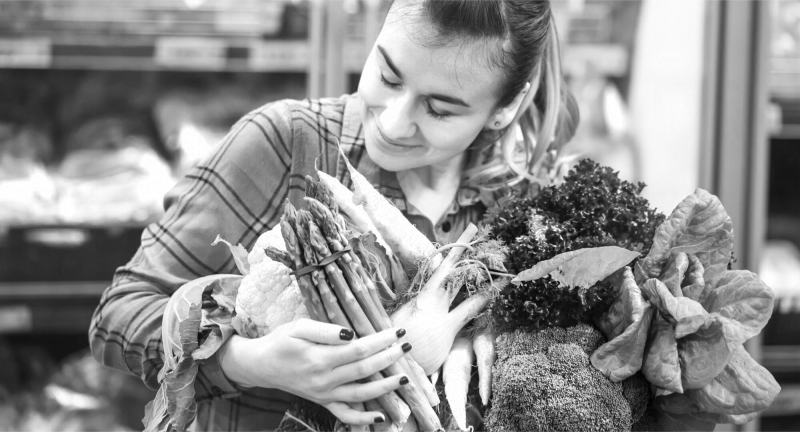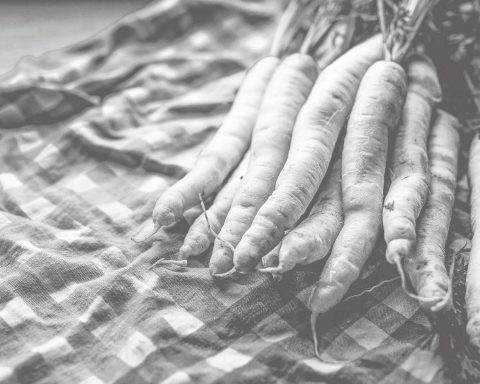Have you ever passed by a bumpy potato or a crooked carrot at the grocery store because you thought it was nasty or spoiled? You are not alone. Every day, millions of people make quick decisions about the food they buy and discard, based just on appearances. But those seemingly innocuous decisions contribute to one of today’s most detrimental food waste misconceptions.
This article discusses the assumption that “ugly” food — misshapen, blemished, or weirdly proportioned produce — is somehow less healthy. It’s just not true.
This article takes a closer look at the myths behind food appearance, debunks common misconceptions about ugly food, and offers practical, empowering steps to help you reduce food waste in households, starting with the produce aisle.
Whether you’re an eco-conscious parent, a home cook, or someone simply trying to make more sustainable food choices, this guide is for you. Read on to debunk harmful food myths.
The psychology behind food appearance
Humans are visual creatures. Because of that, marketing and the media have conditioned you to choose the perfect round tomatoes, glossy apples, and symmetrical zucchini.
Decades of supermarket marketing and advertising campaigns have created these visual cues, which are more than just personal tastes. Social media further enhances this bias by fostering a culture that values and accepts good-looking foods more highly.
Retailers frequently reject unsightly fruits and vegetables that do not meet cosmetic criteria because they fear these items will not sell. This raises consumer expectations by creating a feedback loop that implies food must not only taste excellent but also look “perfect” for acceptance. People initially evaluate food based on its appearance, particularly when it’s unfamiliar, resulting in a preference for visually appealing options.
The downside is that people may become so obsessed with beauty that they forget about nutrition, flavor, and freshness. By prioritizing appearance over substance, humans perpetuate one of the most avoidable myths about food waste.
Read more: Why People Throw Away Ugly Food
Debunking myths about ugly food
Eating ugly food does not negatively impact your health.
Misshapen, discolored, or damaged vegetables are almost always as healthy and nutritious as their more visually appealing counterparts. A crooked carrot or freckled apple may have been subjected to some weather stress or natural variation, but these flaws have little effect on their edibility or taste.
Some studies show that imperfect produce often has the same or even better flavor than flawless versions. These ugly fruits and vegetables may look unconventional, but their imperfections don’t make them any less worthy of your plate.
However, it is important to remember that not all imperfections in produce are safe to eat. These blemishes or scars may indicate spoilage or diseases, which can pose serious health risks if consumed.
So, how can you tell the differences? Here are some tips:
- Look for safe imperfections. Carrots that aren’t shaped well, apples with sun spots, potatoes with little dents on the surface, or tomatoes that have “catfacing” (a puckered, scarred pattern). These are safe to consume, and in most cases, they taste just like the “perfect” ones.
- Be aware of the warning signs. Do not eat fruit or vegetables that have mold, slime, dark soft patches, or bad smells. These are signs that the food is rotting or has germs growing on it. It’s recommended to compost a fruit or vegetable if its flesh is mushy or oozing.
- Trust your gut. If you’re uncertain, please consider using the “look, smell, and feel” test. It’s probably safe to eat if the fruit or vegetable smells fresh, feels firm (within reason), and doesn’t show any indications of active rot, even if it has a few scars or is a little uneven.
It’s time to stop believing food waste myths that ugly produce is inferior. Spoiler: your soup doesn’t care what the carrot looked like before it was chopped.
The real impact of household food waste
Food that is completely edible but looks unappealing is a bigger problem than most people think when it gets thrown out. Household food waste constitutes a sizable amount of trash worldwide.
According to the UNEP Food Waste Index, household food waste in the United States alone reaches 21 metric tons. A large chunk of that is due to misconceptions about freshness, spoilage, and — yes — ugly produce.
Here’s why it matters:
- Wasted food contributes to nearly 10% of global greenhouse gas emissions.
- Produce that is thrown away wastes fuel, water, labor, and packaging for no reason.
- Decomposing food in landfills releases methane, a powerful gas that warms the atmosphere.
In summary, rejecting food as unappealing by traditional standards has actual, unsightly repercussions.
How to reduce food waste by debunking food waste myths
You cannot change the entire food system overnight, but you can make changes in your own homes, one meal at a time. Dispelling the myths surrounding food waste is one of the best ways to make more sustainable decisions.
Learn to evaluate produce quality beyond appearance
Rather than judging food by how it looks, use your senses:
- Smell. Fresh produce has a natural aroma. Spoiled items typically smell sour or off. For instance, a ripe peach should have a sweet and fragrant scent at its stem end.
- Texture. Soft doesn’t always mean bad — some fruits ripen from the inside out. An overripe avocado may be soft all over or have a slightly slimy feel, while a ripe one should yield slightly to gentle pressure but not be mushy.
- Sight. Bruises, dimples, or asymmetry don’t mean something is inedible. Use your judgment. Instead of just looking for minor flaws, look for the uniform color changes that indicate ripeness. For instance, in tomatoes, a deep, uniform red without significant green shoulders suggests peak ripeness.
You will eventually discover that flawed fruits or vegetables are simply different and not necessarily “bad.” Furthermore, value is not diminished by that difference.
Is it just a minor flaw? Cut it. Has it taken on an unusual shape? Grill it. Is there a discolored banana? That’s banana bread waiting to happen.
Support imperfect produce companies and initiatives
More businesses are stepping forward to dispel food waste myths and reverse the trend of aesthetic rejection. These firms specializing in imperfect produce are revitalizing food that would otherwise be destined for waste.
Here are a few leading the charge:
- Imperfect Foods. Delivers fresh, imperfect produce and pantry staples at reduced prices. Available in most major metropolitan areas across the continental U.S., the service operates on a flexible weekly subscription model. Customers can customize their box through their website or mobile app.
- Misfits Market. Focuses on organic, sustainably sourced, and rescued groceries. They serve nearly every zip code in the lower 48 states and offer weekly or biweekly box subscriptions through their website. Their user-friendly platform lets customers shop à la carte, unlike traditional subscription models.
- Hungry Harvest. Combats food waste and hunger simultaneously through rescued produce. Operating primarily in the Mid-Atlantic and Southeastern U.S. (including cities like Philadelphia, Baltimore, Washington, D.C., and parts of North Carolina and Florida), Hungry Harvest delivers rescued produce and grocery staples via a customizable subscription box.
- Ugly Fruit Company. The company transforms rejected, ugly fruit into dried snacks, jams, and preserves. Based in the Pacific Northwest, the Ugly Fruit Company transforms visually rejected but perfectly edible fruit into tasty dried snacks, fruit leathers, and jams. While they don’t offer subscription boxes, their products are available through select grocery retailers and their online store.
By shopping from these imperfect produce enterprises, you are directly supporting sustainable food choices while also making a significant financial statement.
Normalize ugly food at home and with children
Teaching children that food does not have to be perfect is an ongoing investment in sustainability.
Here’s how to model mindful habits:
- Make “ugly food” fun. Let your kids pick the “weirdest” fruit in the bunch and invent a name for it.
- Use ugly fruits and vegetables. Don’t hide them, prepare them in visible ways — soups, snacks, lunchboxes.
- Cook together. While in the moment, explain why sustainable food choices matter.
Children are naturally curious. If you explain why you chose that unusual-looking bell pepper, kids will begin to recognize beauty in variation rather than perfection.
As they mature, they won’t be susceptible to the same misconceptions about food waste that they once believed.
In conclusion
Food waste does not necessarily resemble bags of goods dumped in the trash. It’s sometimes a lonely, ugly apple left behind at the grocery store, or the slightly dented zucchini in the back of the fridge. These little, ordinary moments, fueled by long-held food waste misconceptions, contribute to a tremendous environmental and societal disaster.
But you have more power than you think.
By challenging the assumptions about what “good food” looks like, people can shift the narrative. Ugly food does not equal poor food. It’s simply misinterpreted. Every time you choose flawed food, cook imaginatively with what you already have, or educate your children that worth extends beyond the surface, you are helping to rewrite the rules of sustainability.
So pick up that freckled apple. It might just change how you see your plate.
If you want to see more resources on food waste, check out the Household Management Science Labs. The lab uses the research of the Institute for Life Management Science to produce courses, certifications, podcasts, videos, and other tools. Visit the Household Management Science Labs today.
Photo by pvproductions on Freepik





